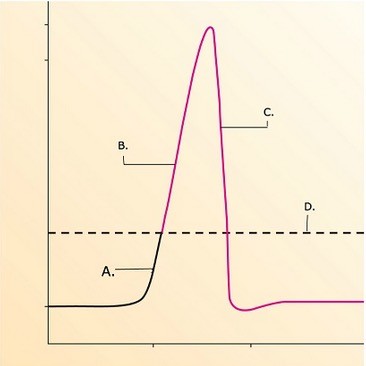The amount of air that a person can voluntarily expel after completing a normal, quiet respiratory cycle is termed
A) total lung capacity.
B) expiratory reserve volume.
C) residual volume.
D) tidal volume.
E) inspiratory reserve volume.
Answer: B
You might also like to view...
The dermis is composed largely of
A) dense irregular connective tissue. B) dense regular connective tissue. C) stratified squamous epithelium. D) stratified columnar epithelium.
Cations and anions that dissociate in water are sometimes called
A. nonelectrolytes and solutes. B. electrolytes, because they can conduct an electrical current. C. molecules. D. nonelectrolytes, because they do not conduct an electrical current. E. molecules and electrolytes.
The ________ is responsible for forming the outer, limiting barrier of a cell.
A. centrosome B. ribosome C. plasma membrane D. peroxisome E. mitochondrion
 What does "C" represent on the diagram?
What does "C" represent on the diagram?
A. Repolarization phase of action potential B. Depolarization phase of action potential C. Depolarization D. Threshold